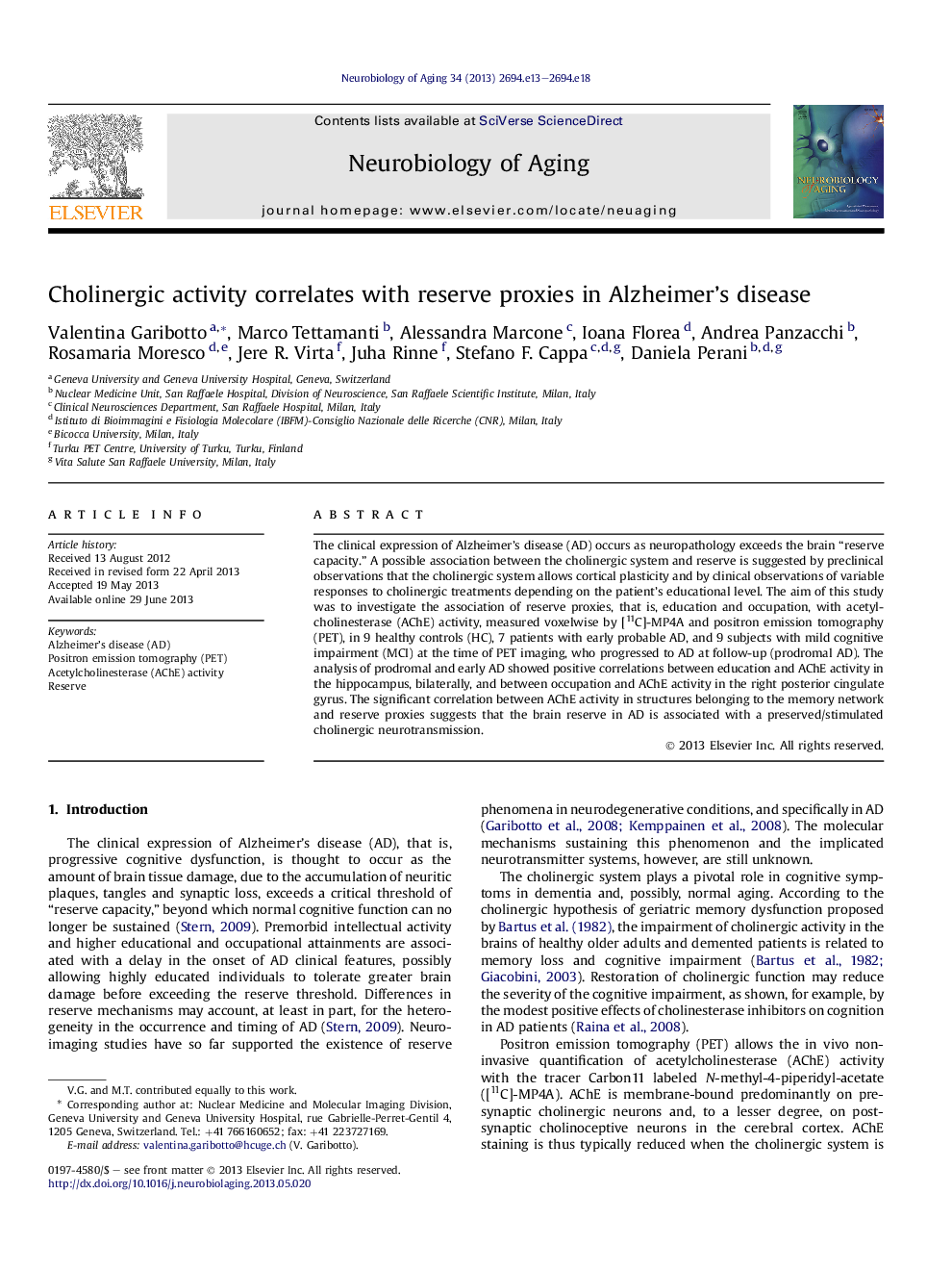| Article ID | Journal | Published Year | Pages | File Type |
|---|---|---|---|---|
| 6807009 | Neurobiology of Aging | 2013 | 6 Pages |
Abstract
The clinical expression of Alzheimer's disease (AD) occurs as neuropathology exceeds the brain “reserve capacity.” A possible association between the cholinergic system and reserve is suggested by preclinical observations that the cholinergic system allows cortical plasticity and by clinical observations of variable responses to cholinergic treatments depending on the patient's educational level. The aim of this study was to investigate the association of reserve proxies, that is, education and occupation, with acetylcholinesterase (AChE) activity, measured voxelwise by [11C]-MP4A and positron emission tomography (PET), in 9 healthy controls (HC), 7 patients with early probable AD, and 9 subjects with mild cognitive impairment (MCI) at the time of PET imaging, who progressed to AD at follow-up (prodromal AD). The analysis of prodromal and early AD showed positive correlations between education and AChE activity in the hippocampus, bilaterally, and between occupation and AChE activity in the right posterior cingulate gyrus. The significant correlation between AChE activity in structures belonging to the memory network and reserve proxies suggests that the brain reserve in AD is associated with a preserved/stimulated cholinergic neurotransmission.
Related Topics
Life Sciences
Biochemistry, Genetics and Molecular Biology
Ageing
Authors
Valentina Garibotto, Marco Tettamanti, Alessandra Marcone, Ioana Florea, Andrea Panzacchi, Rosamaria Moresco, Jere R. Virta, Juha Rinne, Stefano F. Cappa, Daniela Perani,
